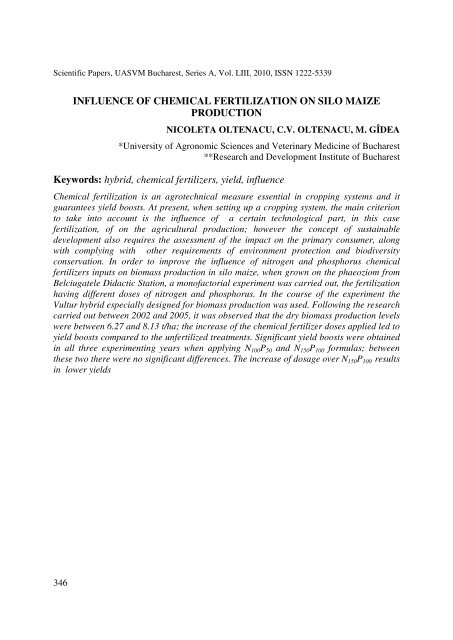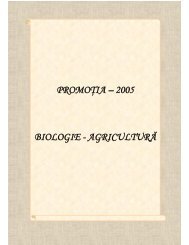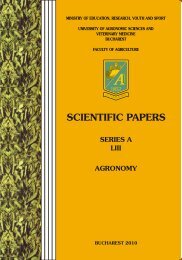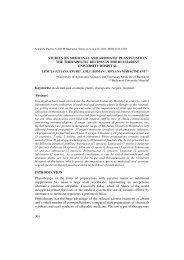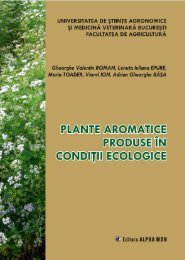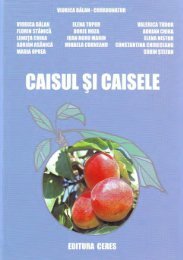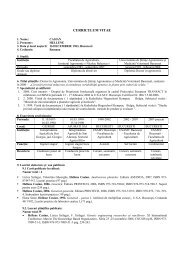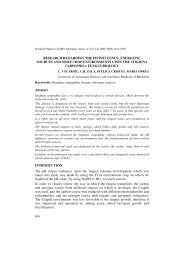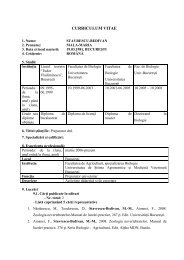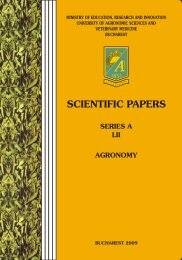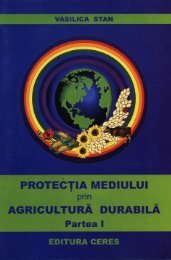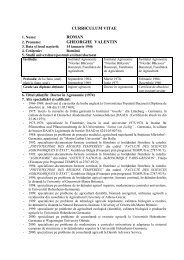SCIENTIFIC PAPERS
SCIENTIFIC PAPERS
SCIENTIFIC PAPERS
You also want an ePaper? Increase the reach of your titles
YUMPU automatically turns print PDFs into web optimized ePapers that Google loves.
Scientific Papers, UASVM Bucharest, Series A, Vol. LIII, 2010, ISSN 1222-5339<br />
INFLUENCE OF CHEMICAL FERTILIZATION ON SILO MAIZE<br />
PRODUCTION<br />
NICOLETA OLTENACU, C.V. OLTENACU, M. GÎDEA<br />
*University of Agronomic Sciences and Veterinary Medicine of Bucharest<br />
**Research and Development Institute of Bucharest<br />
Keywords: hybrid, chemical fertilizers, yield, influence<br />
Chemical fertilization is an agrotechnical measure essential in cropping systems and it<br />
guarantees yield boosts. At present, when setting up a cropping system, the main criterion<br />
to take into account is the influence of a certain technological part, in this case<br />
fertilization, of on the agricultural production; however the concept of sustainable<br />
development also requires the assessment of the impact on the primary consumer, along<br />
with complying with other requirements of environment protection and biodiversity<br />
conservation. In order to improve the influence of nitrogen and phosphorus chemical<br />
fertilizers inputs on biomass production in silo maize, when grown on the phaeoziom from<br />
Belciugatele Didactic Station, a monofactorial experiment was carried out, the fertilization<br />
having different doses of nitrogen and phosphorus. In the course of the experiment the<br />
Vultur hybrid especially designed for biomass production was used. Following the research<br />
carried out between 2002 and 2005, it was observed that the dry biomass production levels<br />
were between 6.27 and 8.13 t/ha; the increase of the chemical fertilizer doses applied led to<br />
yield boosts compared to the unfertilized treatments. Significant yield boosts were obtained<br />
in all three experimenting years when applying N 100 P 50 and N 150 P 100 formulas; between<br />
these two there were no significant differences. The increase of dosage over N 150 P 100 results<br />
in lower yields<br />
346


